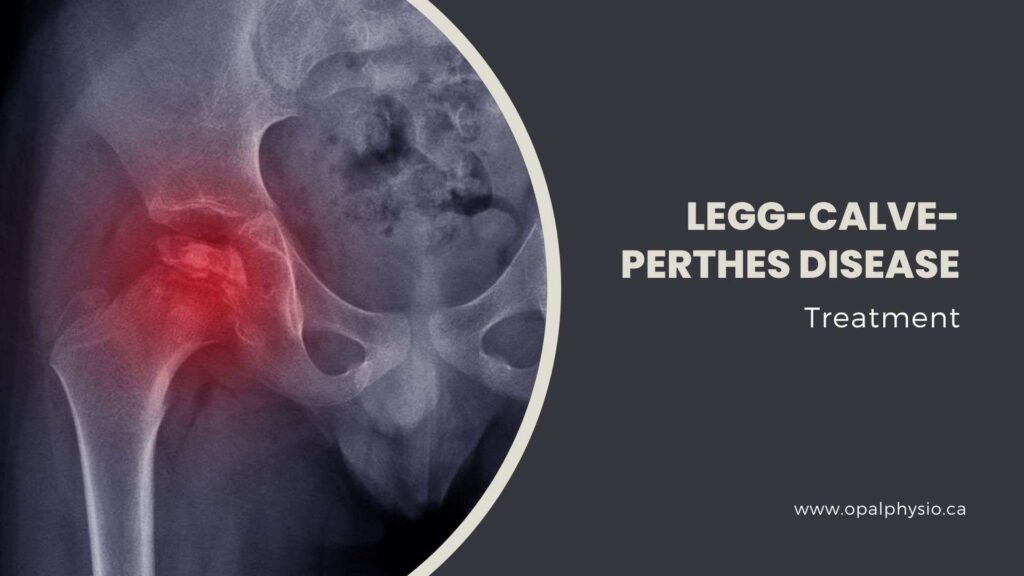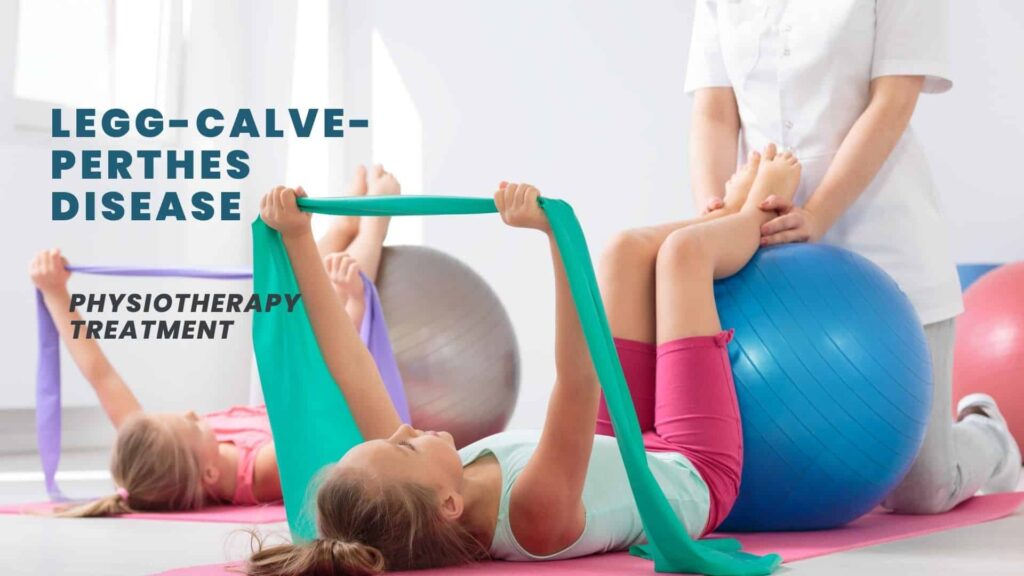Legg-Calve-Perthes disease Physiotherapy Treatment
Legg-Calve-Perthes disease, often called Perthes disease, is a rare childhood condition affecting the hip joint. It occurs when the blood supply to the femoral head is temporarily disrupted. Without an adequate blood supply, the bone cells die, and avascular necrosis occurs. This leads to the collapse of the femoral head, causing inflammation and irritation.
When your child is diagnosed with this condition, it can be a scary and overwhelming time. But your child can live a full and active life with the right treatment and care.
Our Langley Musculoskeletal Physiotherapy Clinic offers physiotherapy treatment for children with Legg-Calve-Perthes disease. We work with your child to create a custom treatment plan.

Symptoms of Legg-Calve-Perthes disease
Legg-Calve-Perthes disease is characterized by the temporary loss of blood supply to the femoral head (the rounded end of the thigh bone that fits into the hip socket). As a result, the bone becomes weak and may break down, leading to hip joint deformity over time.
The symptoms of Perthes disease can vary among children. Some of the common symptoms include:
It’s important to note that some children may not feel much or any pain at all. In such cases, Perthes disease might not be discovered until an X-ray is taken due to a fall or other injury.
Long-term effects of Legg-Calve-Perthes disease
Legg-Calve-Perthes disease can have several long-term effects, varying significantly from patient to patient. These effects are often related to the degree of damage to the femoral head and the age at which the disease developed.
One of the most common long-term effects is the development of osteoarthritis in the hip joint. This is due to the femoral head losing its normal spherical shape, leading to an irregular fit within the hip socket (acetabulum).
This irregular fit can cause the joint to wear out early, leading to arthritis. It’s estimated that approximately 50% of patients who develop Legg-Calve-Perthes disease will experience osteoarthritis by the time they reach their 50s or 60s
Another long-term effect is a shortening of the affected leg. The reported average shortening has usually been 1 to 1.5 cm.
This can lead to a noticeable limp and may require shoe lifts or other interventions to help balance the leg lengths. In severe cases, some patients may require a total hip arthroplasty (hip replacement surgery) in adulthood due to significant joint damage.
Despite these potential long-term effects, it’s important to note that many patients do well into early adulthood, even with some deformity. The long-term prognosis of Legg-Calve-Perthes disease can be relatively benign, especially for patients with certain types of the disease.
While Legg-Calve-Perthes disease can have some significant long-term effects, these can often be managed effectively with appropriate treatment and monitoring. Early diagnosis and treatment can help to minimize these long-term effects and improve the overall prognosis for the patient.
Treatment options for Legg-Calve-Perthes disease
The treatment for Perthes disease depends on the stage of the child’s condition and age. Treatments include time/observation, medications, physiotherapy, orthotics, and surgery.
- Observation: In some cases, especially in younger children, the condition may resolve on its own. Regular monitoring and observation are necessary.
- Rest and restricted activity: Limiting certain activities, like running and jumping, reduces stress on the affected hip.
- Physiotherapy helps improve strength, flexibility, and range of motion. It plays a crucial role in managing the Perthes disease. Specific exercises are prescribed to maintain muscle strength and prevent joint stiffness.
- Occupational therapy can help your child with daily living activities. It can also help with schoolwork and play.
- Bracing: In some cases, a brace or cast may be recommended to support the affected hip and promote proper alignment during healing.
- Surgery: In severe cases, surgical interventions like femoral osteotomy or joint replacement may be considered to improve hip joint movement and help reduce pain when other treatments are ineffective.

Role of physiotherapy in Legg-Calve-Perthes disease
Physiotherapy plays a crucial role in the treatment of Perthes disease. It can help to restore the range of motion in the hip joint, reduce inflammation and pain, and protect the joint as it heals. At our clinic, we offer physiotherapy treatment to
Physiotherapy is tailored to the individual needs of the patient and is often a long-term component of the overall treatment plan for Legg-Calve-Perthes disease.
Physiotherapy aims to optimize function, minimize disability, and improve the quality of life for individuals affected by this condition.
Parents, caregivers, and healthcare professionals must work together to ensure a comprehensive and effective approach to managing the condition.
While Legg-Calve-Perthes disease can be a challenging condition for children and their families, with appropriate treatment and physiotherapy, most children can return to normal activities without limitations.
If you’re looking for a physiotherapy treatment for Legg-Calve-Perthes disease, we can help. Contact us today to learn more about our services and how we can help your child.
